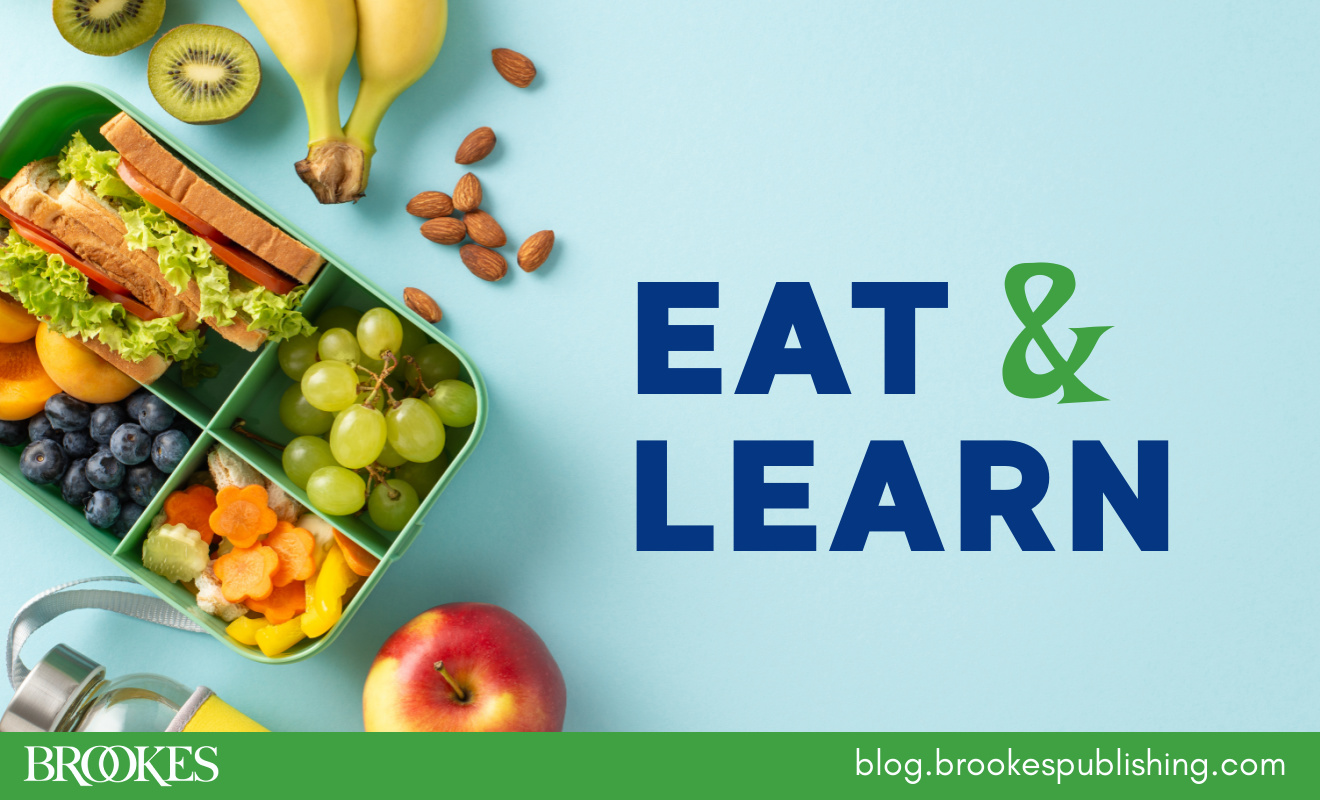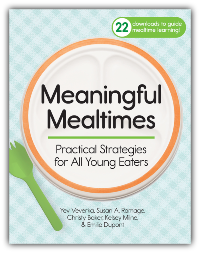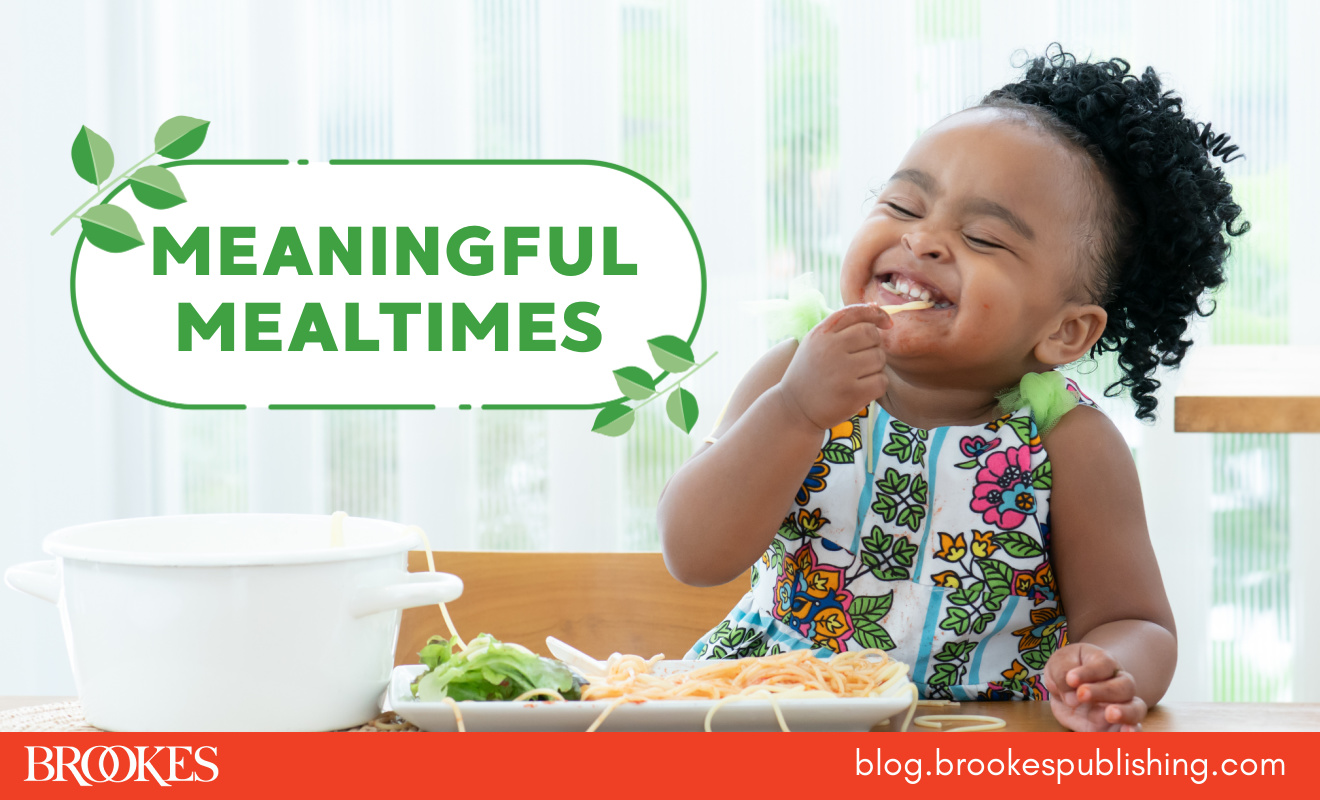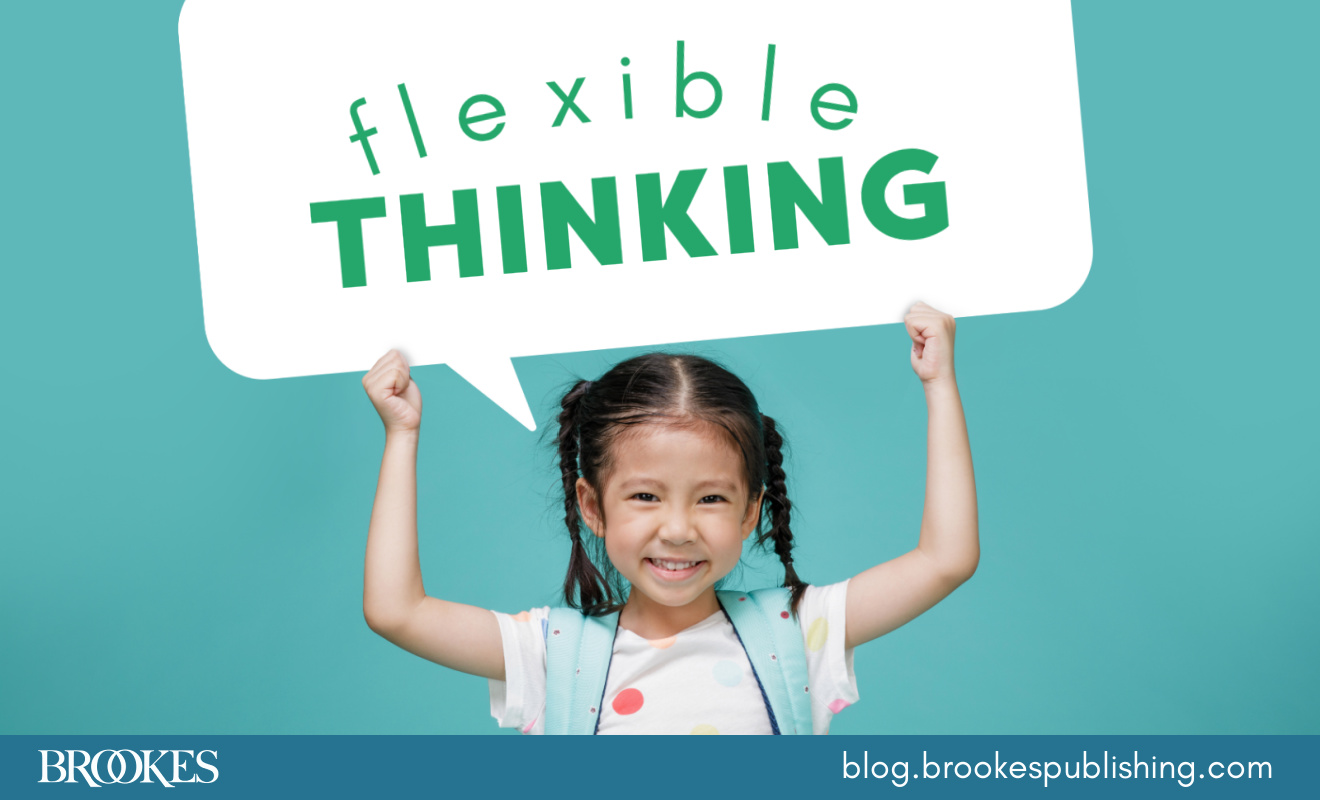Eat and Learn! Working Literacy, Math, Science, and Art Into Early Childhood Mealtimes
January 9, 2025
 Early childhood mealtimes are about more than just eating. They’re ideal settings for connecting with others and learning important new academic or pre-academic skills. Adapted from the new guidebook Meaningful Mealtimes, this post highlights simple ways to connect mealtime and food concepts to other aspects of your early childhood curriculum.
Early childhood mealtimes are about more than just eating. They’re ideal settings for connecting with others and learning important new academic or pre-academic skills. Adapted from the new guidebook Meaningful Mealtimes, this post highlights simple ways to connect mealtime and food concepts to other aspects of your early childhood curriculum.
Literacy
Literacy skills taught in early childhood settings could include building diverse and descriptive vocabulary; sequencing events in order; exploring letters and the alphabet; learning that print has meaning; building awareness of sounds within words; and phonological awareness (e.g., exploring rhyming words, alliteration, syllables). Here are a few ideas for integrating literacy into mealtimes:
- Emphasize vivid vocabulary to describe food, especially action words such as cut or scoop, and descriptive words such as rough or juicy.
- Shape or bite food you are eating into letters.
- Prepare foods together as a group. Practice reading recipes or following a sequence of events represented by pictures and words.
- Show children each of the foods available during your mealtime at the start of each meal. Clap, tap, or stomp the syllables in the name of each food.
Math
Math skills taught in early learning settings could include counting; identifying numbers; measuring (length, volume, weight); making comparisons between sizes or quantities; thinking about fractions or parts of a whole; and making patterns. Here are some specific suggestions for enhancing early math skills during mealtimes:
- Make patterns with small pieces of food on the plate. (Remind children to try to use only foods they will eat.)
- Count pieces of food or features of food (e.g., How many blueberries are in your muffin? How many seeds in an apple?).
- Do taste tests and surveys. Tally the number of responses to a particular question.
- Count the number of bites or chews that it takes to eat different foods. Compare the quantity of bites or chews before you can swallow the food.
Science
Children in early learning settings might be studying parts of the scientific process, such as forming a question, making observations, recording data, and drawing a conclusion. They might also be studying specific topics within science, such as the digestive system, the physiology or biology of chewing and swallowing, how our bodies use food for energy, or the effects of different nutrients or foods on the body. Here are a few ideas for integrating science talk into mealtimes:
- Observe and investigate the different foods you eat. Classify them (e.g., fruits, meats), and identify their different parts.
- Discuss how the foods you are eating came to be there. How were they grown or manufactured?
- Talk about the digestive system as children chew, swallow, and eat.
- Discuss the effects that the foods you eat have on the body. For example, you might talk about how our bodies use energy/fuel, or which nutrients are present in food and how they impact the body.
Art
In early learning settings, children may be learning about color, shape, and form; exploring different art mediums; and learning how to represent items, people, and events from their lives through art. Here are some specific things you can do to connect art and mealtimes:
- Notice the shapes present in food. What shapes can children find within vegetable soup or make out of cucumbers, apples, or carrots? Notice how the shape of foods might change when they are cut differently (e.g., orange rounds vs. orange wedges).
- Arrange pieces of food to represent objects—for example, making a face with berries and banana.
- Explore the texture of different foods, like the smooth skin of an eggplant or the rough rind of a pineapple.
- Use foods like carrots or pretzel sticks to “paint” dips like hummus or baba ghanoush onto crackers or bread. (Be mindful about using only as much food as children can eat.)
Including curriculum skills in literacy, math, science, and art within mealtimes can help you increase children’s interest in food, illustrate new concepts in clear and practical ways, and provide additional repetition of concepts across your curriculum. Try these fun ideas in your classroom—and for much more on meaningful mealtimes in early childhood settings, get the practical guide behind today’s blog post!




Write a Comment
Your email address will not be published. Required fields are marked *
Post a Comment